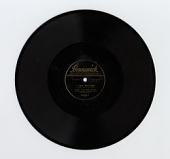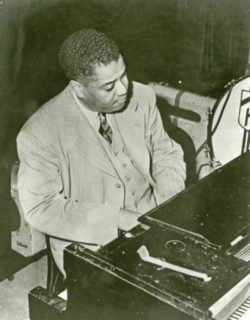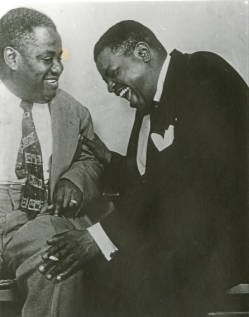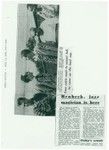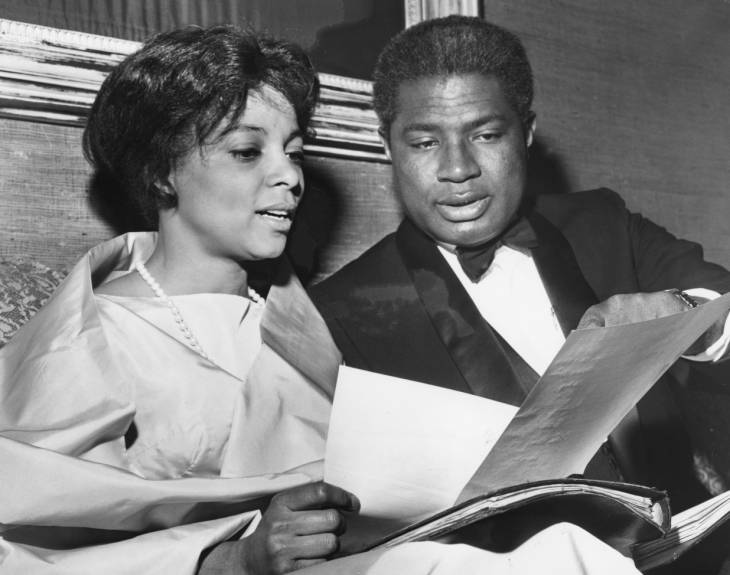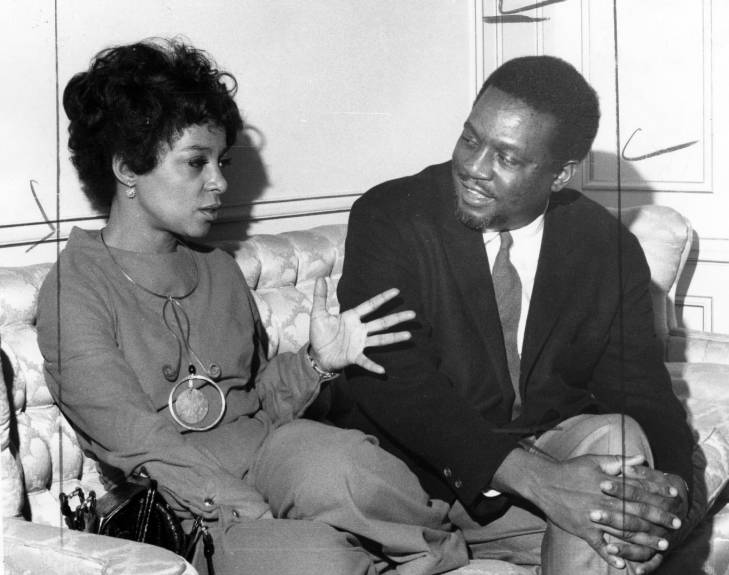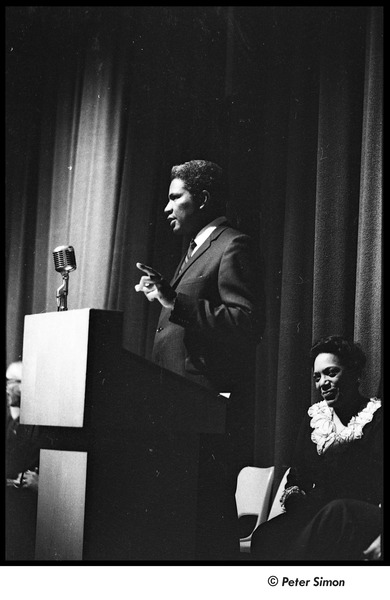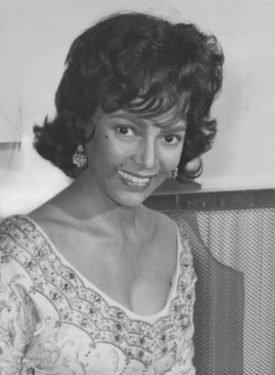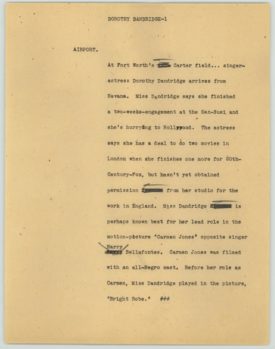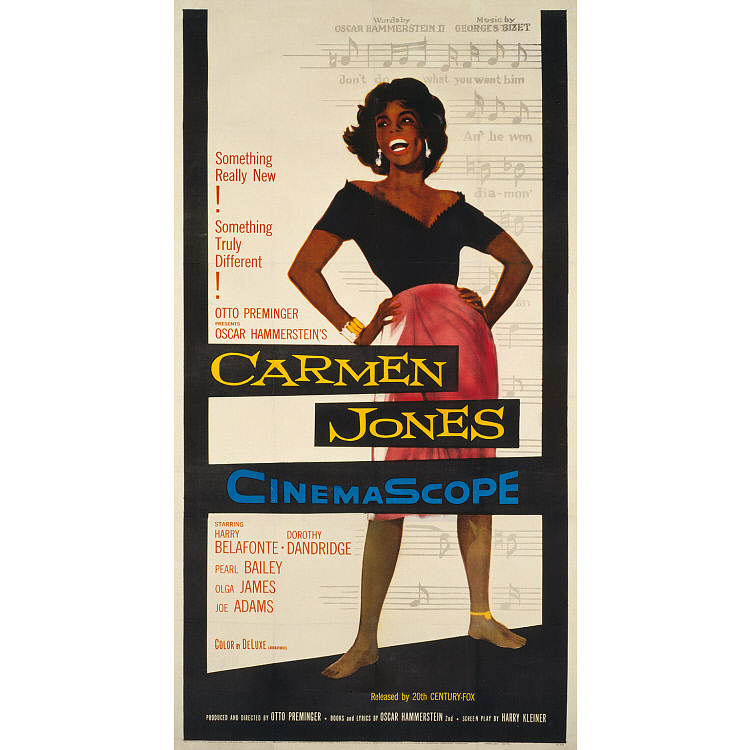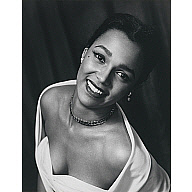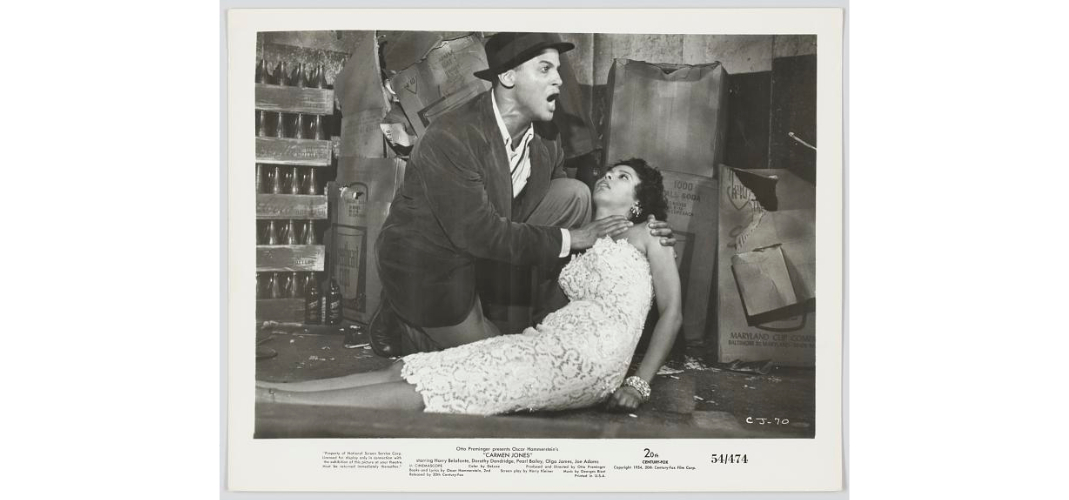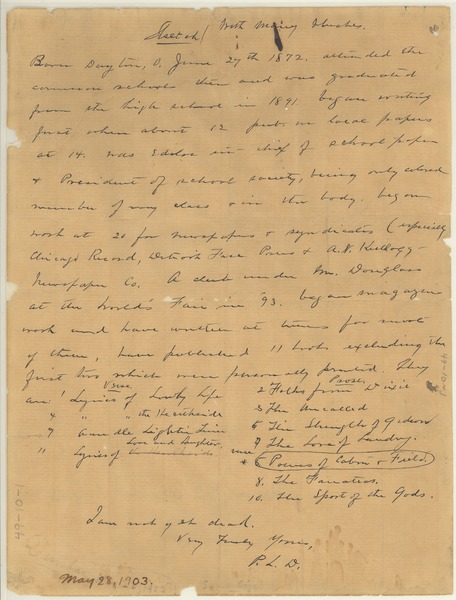African American Ohioans in the Arts
Module Overview
- Topic: African American Ohioans in the Arts
- Time Period: 1900-2000
- Keyword(s): Music; actress; playwright; poet; novelist; performing arts; African-American
- Grade Level(s): Middle to high school
- Learning Standard(s): TBD
This primary source set will highlight four influential African American Ohioans in the arts: Art Tatum, a jazz pianist from Toledo, Ruby Dee, an actress and civil rights activist from Cleveland, Dorothy Dandridge, an actress, singer, and dancer from Cleveland, and Paul Laurence Dunbar, a poet from Dayton.
This module will serve to provide background and contextual information of each artists’ accomplishments. Examples tie together sound recordings, photographs, newspaper articles, oral history, and more. Discussion questions and classroom exercises will combine works by these Ohioans with primary sources to explore issues of identity, opportunity, privilege, disability, professional opportunities, and representation.
After the primary source items, you will find an Additional Resources list and a Teaching Guide that includes discussion questions and classroom activities.
Influential Artists And Media
Art Tatum (b. 1909 (Toledo, Ohio) - d. 1956 (Los Angeles, California)
Art Tatum Trio, Brunswick. Sound recording: I Got Rhythm; I Would Do Anything For You. 1943.
Art Tatum at the Piano
Art Tatum and Oscar Peterson
Ceylon Observer, "Brubeck jazz magician is here"
Contributed by California Digital Library & University of the Pacific
Central Avenue sounds oral history transcript : William Douglass
Ruby Dee (b. 1922 (Cleveland, Ohio) - d. 2014 (New Rochelle, New York)
Ruby Dee was a stage, screen and television actress. The Cleveland-born Dee was raised in Harlem by her father. She graduated from Hunter College. Among her notable acting roles, she starred in the movie, A Raisin in the Sun, in 1961, and was nominated for an Academy Award as Best Supporting Actress for her work in American Gangster (2007).
Over the years, she appeared in productions in Cleveland at a number of venues, including the Hanna Theater, Karamu House, and Cleveland Playhouse, according to about.com.
She received three Emmys, a Screen Actors Guild Lifetime Achievement Award, and the Kennedy Center Honor in 2004. She was married twice, the second time to actor Ossie Davis, until his death in 2005. Ruby Dee is also known for being an active participant in the Civil Rights Movement. (Cleveland Public Library)
Dee, Ruby 1964
Dee, Ruby 1969
Ruby Dee (at ironing board) in the stage production 'Raisin in the Sun'
Courtesy Billy Rose Theatre Division, The New York Public Library
Martin Luther King Jr. rally at the Fieldston School: Ossie Davis speaking, Ruby Dee seated on right
Dorothy Dandridge (b. 1922 (Cleveland, Ohio) - d. 1965 (Hollywood, California)
Dorothy Dandridge was an American actress and singer, and the first African-American to be nominated for an academy award for Best Actress. She was born in Cleveland, Ohio, and performed for a number of years with her sisters in the “Wonder Children,” an act created by her entertainer mother, Ruby.
From the age of nine, Dandridge was raised in Los Angeles. During her singing career, she had success as both a solo performer and a member of the Dandridge Sisters, and performed in a number of famous places, including the Cotton Club and Apollo Theater in New York City. She started to get smaller movie roles in the mid-1930s, and gained her first starring role in the 1953 film, Bright Road. The best actress nomination was for her part in Carmen Jones in 1954.
Dandridge also appeared in the musical version of Carmen Jones, performing in Cleveland at the Palace in 1954, according to the Encyclopedia of Cleveland History. Her final major film role was as Bess in Porgy and Bess, but the movie wasn’t a critical success. She was married twice, divorcing her second husband in 1962. In 1963, she filed for bankruptcy. Dandridge died of an embolism in 1965. (Cleveland Public Library)
Dandridge, Dorothy 1965
[News Script: Dorothy Dandridge]
Dorothy Dandridge
Dorothy Dandridge
Film still for Carmen Jones
Contributed by National Museum of African American History and Culture
Paul Laurence Dunbar (b. 1872 (Toledo, Ohio) - d. 1906 (Toledo, Ohio)
Love and Sorrow
Elma Lewis reads the poem 'Sympathy' by Paul Lawrence Dunbar
Autobiographical Sketch of Paul Laurence Dunbar
Teaching Guide
This guide will serve to outline some possible ways to interact with the digital content and has suggestions to have students pull information from the examples listed above.
Discussion Questions
- How do you think Art Tatum inspired future jazz artists?
- How did celebrities play a role in the civil rights movement? What current issues are important to you and how can you get involved?
- Did most of these artists stay in Ohio? Why or why not?
Download Discussion Questions (PDF)
Classroom Activities
- Read a poem by Paul Laurence Dunbar and then sing (or listen to a recording) of a song based on the same poem. Ask students to reflect on what the poem may mean for them today from their perspective and point of view and how setting the poem to music changes what they get out of it.
- Discuss what it might have been like to be an African-American in the arts in the early to mid twentieth century. What challenges might these artists have faced? What were they able to accomplish? How does that compare to now?
- Watch clips from Carmen Jones and A Raisin in the Sun. How are these depictions of African-Americans different? How does that relate to the source material (a French opera and an American play)?
